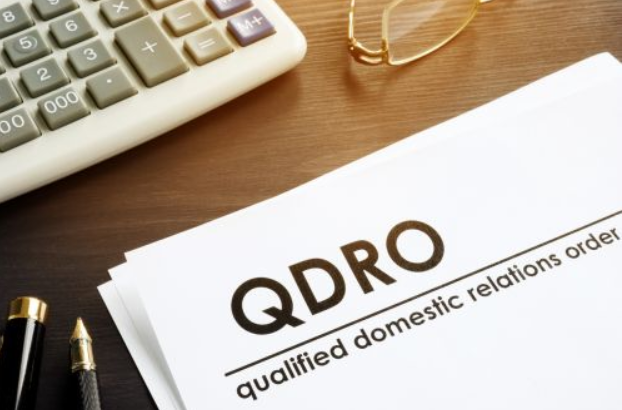If you’re looking into how to do a QDRO without an attorney, you’re in good company. Many individuals find themselves on this path and are eager to save money while ensuring their rights are protected.
Understanding how to do a QDRO without an attorney can empower you as you take control of your financial future. Whether you’re ready to tackle this process solo or simply exploring your options, we’ll guide you through every step of creating a QDRO on your own. Let’s dive deep into this essential topic!
Understanding QDROs: What They Are and Why They Matter
A Qualified Domestic Relations Order, or QDRO, is a legal document that outlines how retirement benefits will be divided between divorcing spouses. It specifically addresses pension plans and other types of retirement accounts.
QDROs are critical in ensuring that both parties receive their fair share of these assets. Without one, you might forfeit access to significant financial resources accumulated during your marriage.
They serve as court orders recognized by plan administrators, making the division process smoother. A properly executed QDRO safeguards your rights and prevents future disputes over retirement funds.
Understanding this document’s role can help you navigate your divorce more effectively. It’s not just about splitting assets; it’s about securing long-term financial stability for yourself post-divorce.
When Do You Need a QDRO?
You need a Qualified Domestic Relations Order (QDRO) when you’re going through a divorce or legal separation and there are retirement benefits involved. This order is crucial for dividing pension plans, 401(k)s, and other types of retirement accounts.
If your spouse has accrued significant retirement assets during the marriage, it’s essential to address these in your settlement. A QDRO ensures that you receive your fair share without incurring penalties or taxes prematurely.
Moreover, if you’re a participant in certain government-sponsored plans like military pensions or state employee benefits, obtaining a QDRO becomes even more vital. It protects both parties’ interests and lays out how the assets will be divided post-divorce.
Understanding the necessity of a QDRO can save time and prevent misunderstandings down the road. Timing matters too; addressing this early in negotiations simplifies future financial arrangements.
DIY vs Hiring an Attorney: Pros and Cons
When considering how to do a QDRO without an attorney, weighing the pros and cons is essential.
Going the DIY route can save you money. Legal fees add up quickly, and filing the paperwork yourself feels empowering. You gain hands-on experience navigating your own situation.
On the flip side, handling this complex legal document alone may lead to mistakes. Errors could delay your case or complicate things further down the line.
Hiring an attorney ensures expertise in drafting and negotiating a QDRO. They understand intricate details that might escape someone unfamiliar with pension plans and divorce law.
However, hiring representation can be costly. Budget constraints often push people toward self-representation despite potential risks involved.
Evaluate your comfort level with legal jargon and processes before making a choice that suits your unique circumstances well.
Steps to Follow for a DIY QDRO
To tackle a DIY QDRO, start by gathering essential documents. You’ll need the original divorce decree and details about your spouse’s retirement plan.
Next, familiarize yourself with the specific requirements of the retirement plan involved. Each plan has its own rules regarding division of assets.
Once you have this information, draft the QDRO using clear language. Make sure it outlines how benefits will be divided and adheres to legal standards.
After drafting, submit the QDRO for court approval. This step is crucial as an unapproved document won’t be enforceable.
Once approved, send copies to both your ex-spouse and their retirement plan administrator. Follow up to ensure they have received it and understand what comes next.
Keep all records organized for future reference or any potential disputes that may arise later on.
Common Mistakes to Avoid When Doing a QDRO Without an Attorney
One of the most common mistakes is not understanding the specific requirements of your retirement plan. Each plan can have different rules regarding distributions, and missing these details can lead to delays or denials.
Another pitfall is using generic language in your QDRO document. Tailoring the order to fit both parties’ needs ensures there are no misunderstandings later on.
Failing to communicate effectively with your ex-spouse can also create issues. Open dialogue helps clarify intentions and prevent disputes down the line.
Don’t overlook deadlines for submitting a QDRO after divorce proceedings. Missing these timelines could jeopardize your financial future significantly.
Neglecting to consult with a benefits administrator before finalizing documents can result in complications. Their insights are invaluable in ensuring compliance with all necessary regulations.
Tips for Negotiating a QDRO with Your Ex-Spouse
Negotiating a QDRO with your ex-spouse can be challenging, yet it’s crucial for both parties. Start by approaching the conversation calmly and openly. Establishing a respectful tone sets the stage for productive discussions.
Be clear about your needs and expectations regarding retirement benefits. Transparency fosters trust and encourages cooperation.
Consider proposing several options to make it easier for your ex to see potential solutions. Flexibility can lead to compromise, which is often necessary in these situations.
Listening actively is just as important as speaking your mind. Acknowledging their concerns shows you value their perspective, making them more likely to reciprocate.
Document any agreements reached during negotiations. This step ensures that both of you are on the same page moving forward avoiding misunderstandings later on will save time and stress down the line.
Conclusion
Navigating the complexities of a Qualified Domestic Relations Order (QDRO) without legal assistance can seem daunting. However, with careful research and an understanding of the process, it’s possible to handle it on your own. Remember that while there are clear benefits to a DIY approach—such as saving money a QDRO is still a critical document that requires attention to detail.
Avoid common pitfalls by double-checking all documentation and being thorough in your calculations related to asset division. With patience and diligence, you can successfully navigate this process independently, ensuring both parties receive their rightful share of retirement benefits. Your financial future depends on it, so take each step seriously!

